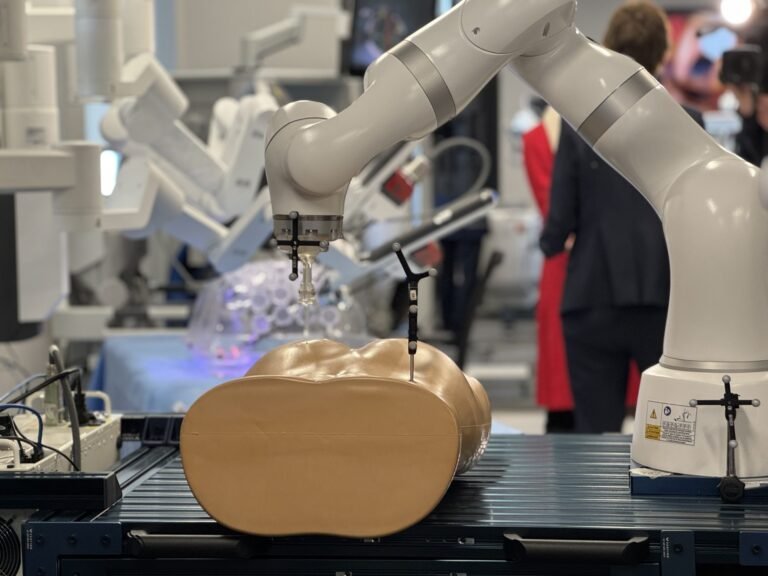In a bold move that’s shaking up global military dynamics, China is preparing to test a groundbreaking new drone that could redefine aerial combat: the Jishuan SS UAV, an unmanned aerial vehicle with the capabilities of a flying aircraft carrier. This futuristic platform is designed to deploy swarms of artificial intelligence-powered drones mid-flight ushering in a new era of high-altitude, high-tech warfare.
The Jishuan, whose name translates to “Nine Heavens” or “High Sky,” isn’t just another military drone. It represents a major leap forward in both unmanned aviation and battlefield strategy. Unveiled at the Zhuhai Air Show in November 2024, the UAV is now scheduled for its first test flight in mid-2025 a milestone that could shift the balance of power in drone warfare.
What Is the Jishuan SS UAV?
Developed by the state-owned Aviation Industry Corporation of China (AVIC), the Jishuan is a massive jet-powered UAV with remarkable specs. With a wingspan of 25 meters (82 feet) and a maximum takeoff weight of 16 tons, it can carry an impressive 6-ton payload on par with many manned fighter jets.
Designed for high-altitude, long-range missions, the Jishuan can fly at 50,000 feet well above the reach of most medium-range air defense systems and boasts a range of 7,000 kilometers (4,350 miles). That’s the distance from Beijing to Hawaii without refueling.
But the true innovation lies in its central mission: acting as an aerial mothership for smaller AI-powered drones.
Swarming the Skies: A New Type of Warfare
At the core of the Jishuan’s capabilities is a modular internal system known as an “isomerism hive module”. This feature allows it to release up to 100 smaller drones or loitering munitions mid-flight. Think of it as a real-world version of the motherships from sci-fi blockbusters except these drones aren’t fictional.
Externally, the aircraft is equipped with eight hardpoints: six designed for heavy weaponry and two for air-to-air missiles, giving it both offensive and defensive capabilities. Its jet engine, mounted atop the fuselage, gives it a thrust advantage over propeller-based systems and allows for greater mission flexibility.
Thanks to its tricycle landing gear, it can also take off and land from conventional airstrips, adding versatility to deployment scenarios.
The AI Advantage
What makes the Jishuan even more revolutionary is its use of artificial intelligence. The drones it deploys are expected to be autonomous, capable of working together in coordinated swarms. According to recent reports, China has already tested AI-powered drones that have outperformed human pilots in simulated aerial dogfights making split-second decisions and outmaneuvering opponents.
These swarms are more than just novelties they’re strategically transformative. A conventional defense system might intercept a few incoming threats, but trying to stop 50 or 100 drones at once is like swatting at a cloud of swarming bees: overwhelming and almost impossible.
AI-enhanced coordination allows these swarms to adapt mid-mission, communicate with one another, and potentially operate without human oversight. This opens the door to complex missions like electronic warfare, radar jamming, and distributed surveillance, all without risking human lives.
Military and Civilian Use Cases
Though clearly a major leap in combat drone development, the Jishuan is being pitched by AVIC as a dual-use platform. Potential applications include maritime patrol, disaster relief, border surveillance, and resource monitoring. This mirrors a growing trend in China’s military-industrial complex, where civilian and military technologies are intentionally blended.
Still, the Jishuan’s military implications are front and center. With tensions rising in sensitive regions like the South China Sea and the Taiwan Strait, the ability to project power without risking personnel is a major strategic advantage.
A Global Drone Race
China’s rapid progress in unmanned systems hasn’t gone unnoticed. In fact, a recent Pentagon assessment noted that China’s drone capabilities are beginning to rival those of the United States. In response, the U.S. has launched the $1 billion “Replicator” initiative, aiming to field thousands of air, land, and sea drones by August 2025.
Other nations are following suit. The U.S. Defense Advanced Research Projects Agency (DARPA) has been developing “Gremlins”, a program that explores launching and retrieving drones from larger aircraft. Russia, too, has been investing in drone swarming technologies. Even smaller countries are developing compact, cost-effective drone fleets to stay competitive in this rapidly evolving domain.
Ethical and Strategic Questions
The rise of autonomous weapon systems brings with it a host of ethical and legal concerns. As drones become capable of making decisions independently ,potentially even identifying and engaging targets without human input , international laws and norms struggle to keep pace.
There’s also a growing focus on anti-drone technologies. China is reportedly working on systems like the YC48 “UAV Terminator” radar and laser-based defense platforms to neutralize incoming threats. The future battlefield may well be a constant interplay of drone and counter-drone systems, all moving faster than human reaction time.
What Comes Next?
The Jishuan’s first test flight, , will kick off a new phase of trials that could ultimately see the platform enter service with China’s People’s Liberation Army. If successful, it will mark a pivotal moment in the transition from traditional warfare to AI-driven, unmanned combat systems.
We are witnessing the dawn of a new era in warfare one where machines fly the missions, make decisions, and even fight the battles. The Jishuan SUAV isn’t just an aircraft; it’s a symbol of how quickly military technology is evolving, and how future conflicts may be fought without a single pilot in the sky.
Whether viewed with awe or apprehension, one thing is clear: the age of drone motherships has arrived.







